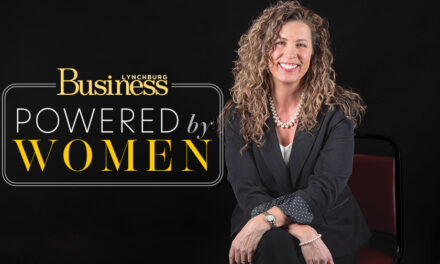Trends and Innovations that Increase Excitement and Productivity
Most people likely consider business meetings to be as exciting as routine health checkups, but new trends and innovations in the field may change their outlook. More and more businesses are moving away from stuffy lecture-style meetings that allow for little interaction and toward more dynamic and collaborative methods and formats. Read on for five ideas from local professionals on how to hold a productive, morale-boosting, and fun— yes, fun!—business meeting.
1. Consider holding meetings outside of the office—or even outdoors!
One of the best and easiest ways to enliven business meetings is to venture outside of the office; the change of scenery will likely prove refreshing and thus increase productivity.
“Finding locations that are outside the office but also convenient to the office location can give people a fresh perspective and may tend to engage more dialogue,” says Wanda Crocker, co-owner of
Acorn Hill Lodge.
“If appropriate, even holding certain types of meetings outside—at the walking track, in a pavilion, on the grounds—tends to make people more relaxed and give them the opportunity to get to know others on more of a personal level.”
Additionally, if you choose to hold a meeting at an organization that offers business meeting services, you can focus more on the content of the meeting and less on the logistics. “When speaking with clients about their needs and goals for their business meetings, the resounding answer is that they are looking for a one-stop shop that takes care of all aspects from space to food and beverage to audio visual needs,” says Andrew Marks, Director of Sales at Hilton Garden Inn Lynchburg. Regardless of your specific goals for your meeting, these professional venues will work with you to create the format and atmosphere you want. “Some meeting planners want a space that limits distraction as much as possible, while other planners would prefer to create a planned distraction so their audience doesn’t lose focus outside of that distraction,” says Brad Goodale, Director of Sales at Fairfield Inn & Suites by Marriott Lynchburg Liberty University. “Every meeting is different, so we listen to each client’s needs and accommodate them as best we can.”
2. Include meaningful icebreakers and other activities that encourage communication and collaboration.
Although they are always a good idea in theory, icebreakers can be hit or miss depending on their relevance. “I believe that every meeting should have certain aspects of interactive fun, but these icebreakers usually go further when they pertain to the main theme of the meeting,” says Ethan Swank, Facility Manager at Liberty Mountain Conference Center. According to Marks, competitive and team-oriented icebreakers are also a good option. “My favorite innovative idea has come from a training that I attended with Hilton Garden Inn,” he says. “We were split into teams at tables throughout the duration of our training and we would compete in ice breaker trivia sessions on anything and everything, so it made you think outside of just hotels and sales. By the end of the week, the team with the highest score received a prize of some sort. This made meetings and training sessions more fun and helped everyone engage more throughout the entire session.” Of course, communication and teamwork can and should also occur outside of icebreaker activities. For businesses in arts fields, Geoffrey Kershner, Executive Director of Academy Center of the Arts, recommends collaborative, solution-focused design thinking.
“Design thinking is really helpful for generating ideas and working through obstacles,” he says. “In the arts, we have always used design thinking in our work, but now the business sector is finding it helpful as well. Now that we have exited the information age and entered the conceptual age, the ability to creatively problem solve is crucial.”
3. Tailor the length of your meeting to your specific business type and objectives (and for longer meetings, food is a must!)
The notion of an ideal business meeting duration is obsolete. The most successful and productive business meetings are those in which the duration is designed around the content rather than the other way around. “For quick meetings to disperse information, the shorter the better,” Crocker notes. “But for team-building and engagement at all staffing levels, an off-site, all-day meeting with meal services might be best. Having meals together ensures that the dialogue continues throughout the day, lending itself to built-in team-building.”
Swank has a similar opinion. “I believe the duration of a meeting greatly depends on a number of things, such as the content, the forum, and the anticipated participation from the audience,” he says. “For example, weekly staff meetings, full of standard housekeeping topics, should never go longer than a brainstorming session.”
When it comes to meetings in an arts arena, Kershner believes that brevity breeds creativity and efficiency. “The funny thing that happens in meetings at an arts organization is that they are light and casual due to the personalities involved and the work that we do,” he says. “For us, an hour-long meeting with consistent humor and jokes interjected with the business at hand helps strike a balance of effectiveness and fun.”
4. Don’t forget to follow up after the meeting.
One of the most important and often overlooked aspects of a business meeting occurs after the meeting is over: the follow up. “Always follow up your meeting with a detailed list of notes,” Swank says. “More often than not, people forget what a meeting was about after a week or two. Emailing a brief list of what was discussed and decided in a meeting can help the message really sink in. It is also a great way to keep everyone informed, in case anyone was unable to make it to the meeting.”
5. Utilize technology conscientiously.
The role of technology in business meetings is somewhat dubious in that it has the capacity to both unify and divide. According to our local experts, the optimal way to incorporate technology is to utilize its innovative and informative elements without using it to entirely replace face-to-face meetings.
“While the convenience of dial-up and webcast meetings have revolutionized the ways meetings are held and have helped to save costs, the opportunities to get staff and employees together for face-to-face interactions are paramount to building a team that understands one another and works well together,” Crocker says.
Kershner agrees that the idea of digital meetings completely replacing face-to-face meetings is somewhat problematic, but he also envisions exciting digital opportunities, particularly for arts organizations. “I think more and more, as technology advances, the dynamics of digital meetings will advance,” he notes. “I think some of what we do in real space and real time will shift to the digital sphere. To be honest, because I believe in the power of building community through sharing space and experience, I am not sure how I feel about this. Regardless, it is inevitable. With this, when I think about the light and fun nature of our meetings, I could see augmented reality becoming a tool for having fun and keeping meetings engaging.”








